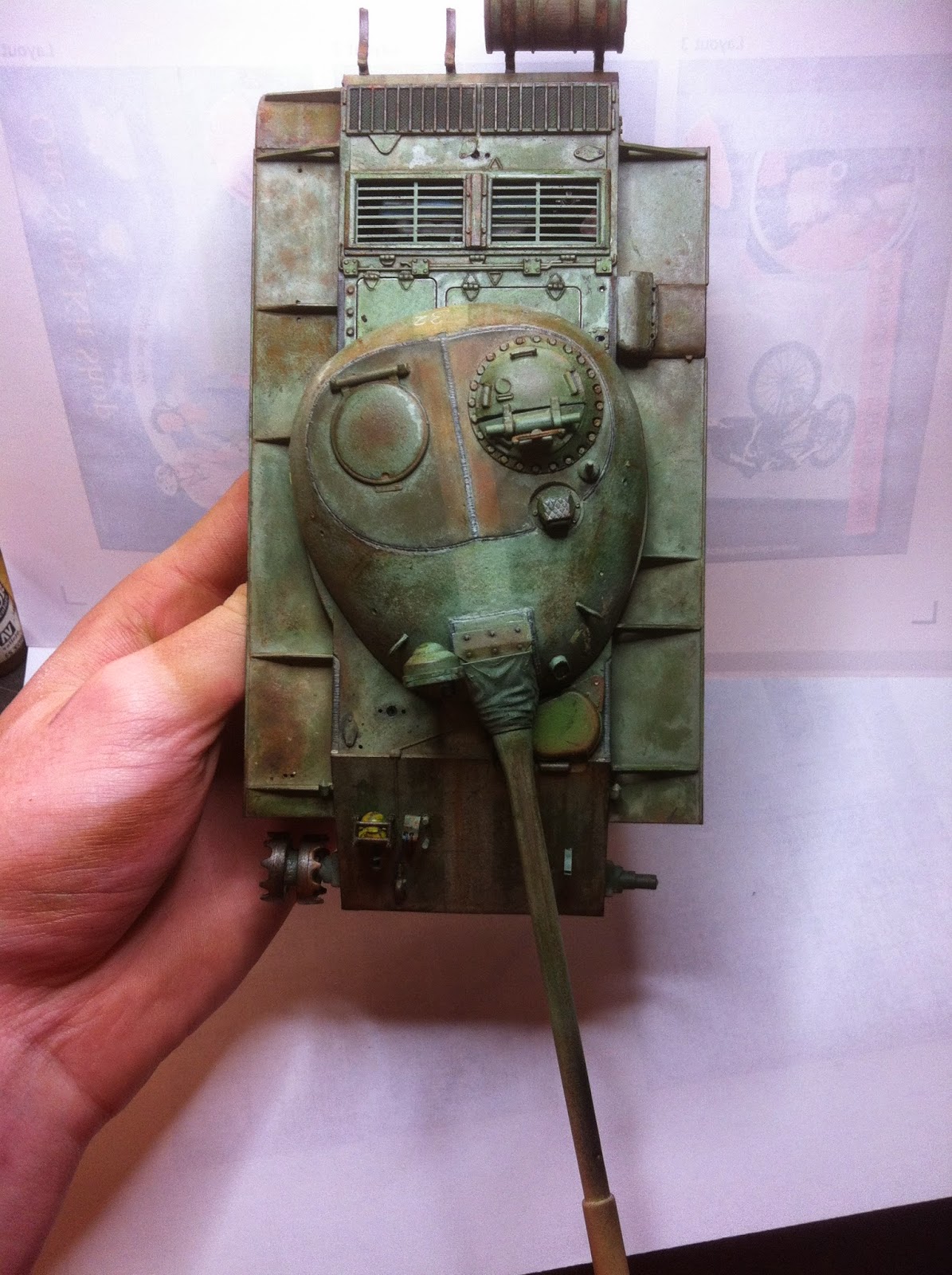Hey guys,
Not very many good photos of this yet and there are still several projects Ive already completed to upload but I feel this is one of my better works.
I bought this kit in 2011 for £8 from Glasgow ModelFest, still new in bags despite being 24 years old :D
Anyway, I started the chassis around late 2013 simply for something to do. Whilst overall detail obviously isn't on par with what we are now used to, this is in no way a bad kit, turret texture, weld seams and many other crisp parts are present. However, I was put off by the low quality of the road wheels and resultantly, the project was shelved until December of 2014.
A specific photo (a truly excellent one at that) inspired me to make use of the neglected T-55. The pic, featured below, is dynamic and would give a chance to try out new techniques whilst simultaneously being 'original'.
I started off by deciding what features of the photo I wanted to carry through and which I was going to apply artistic license to :D I omitted the exhaust cover, splash board, 1 head light, 1 fuel drum, the commander's searchlight, 3 of 4 mud guards, 4 of 10 road wheels, all bar 1 fender stowage bow, 1 fuel tank and drilled out most filler caps.
At this point, the tank was practically bare and I began to drill out the solid plastic engine deck vents in order to depict an engine compartment (albeit basic). A pin vice was used to drill dozens of tiny holes all the way around the edges of the vents before these were connected with a sharp blade causing the vents to come away. I then filed the internal edges and put a piece of etch from the Eduard T-28 set to represent the vents I had just removed. This was not an ideal solution and completely inaccurate but does allow a clear view into the engine compartment I had mustered using parts from the spares box and an old Trumpeter engine. (Not present in photos :D )
Once all sealed up, I primed the tank with Halfords Matt Black spray can and prepared for some Colour Modulation (Not very clear in my pics, as usual :D )
This began with shadows being done with Vallejo Russian Green, intermediate areas in Cam. Green and highlights using Olive Green.
By now, the fate of this kit was in question. I was leaning more toward a Russian scrap yard setting rather than replicating the fore mentioned picture. The tank was already in a state disrepair and so suited both, the latter now more appealing as I would prefer to do the photo justice at a later date with a better kit.
(Ignore the Panzer 2 :D )
A white stripe was drybrushed down the middle on the tank, hinting that before ending up in scrap, this vehicle took part in the 1968 Czech invasion. Small patches of brown and dark orange were airbrushed onto likely corrosion spots before the entire model was given a coat of AK Worn Effects.
Panzer Aces Russian Highlights II was then misted over and given 10mins to dry before I began the chipping process. I focused on the likes of the turret roof, fenders and front glacis.
These areas were then enhanced with a piece of sponge and acrylic paint. New rust is typically brightish orange and lives on the edges of corrosion patches. As such,orange was applied first and on the largest scale, Slightly older rust, brown, would occupy the middle ground whilst the oldest and smallest section would be a dark brown. This formula helps create a sense of age and depth, a good base for further weathering.
1. Mask off part
2. Sponge on orange (fresh rust) paint
3. Sponge brown (worn rust) paint to a slightly lesser extent leaving orange at the edges
4. Sponge on black/brown (old rust) paint only on the edge. A graphite pencil can then be used to give a metallic shine to said edge.
(Sorry for poor photos again, looks far clearer in real life :D Test subject was a Trumpeter PT-76 which you may see in future ;) )
A subtle brown enamel wash was then used to blend the entire project together in preparation for more prominent rusting. The armoured plate around the turret rings was given a fresh hue by rubbing in orange oil paint with a stiff old brush. This process was also used on the exhaust and glacis edges.
AK rust washes were then used to stain certain areas a mild orange and highlight specifically corroded areas.
For the first time ever, I used acrylics for streaking (After reading Scratchmod Rob's fantastic PT-76 article in Military Modelcraft International). In my opinion, it worked reasonably well for a first attempt and their fast drying time allows layers to be built up quickly. However, paint consistancy, brush moistness and time left are all something which must be monitored closely and practiced in order to create realistic finish.
The fuel drum was chipped like the rest of the tank but the straps were masked off and given more attention, this helped make them stand out.
A final pin wash, light dust wash on small areas for contrast and light grey wash around the turret roof panel weld seam to depict the decaying lead weld were the final steps.
From base coat to finish, the project took around 16 days and has spurred me on to attempt more scarp yard vehicles. (Still need to glue the grab handles, wheels and stowage on :D :D )

















No comments:
Post a Comment